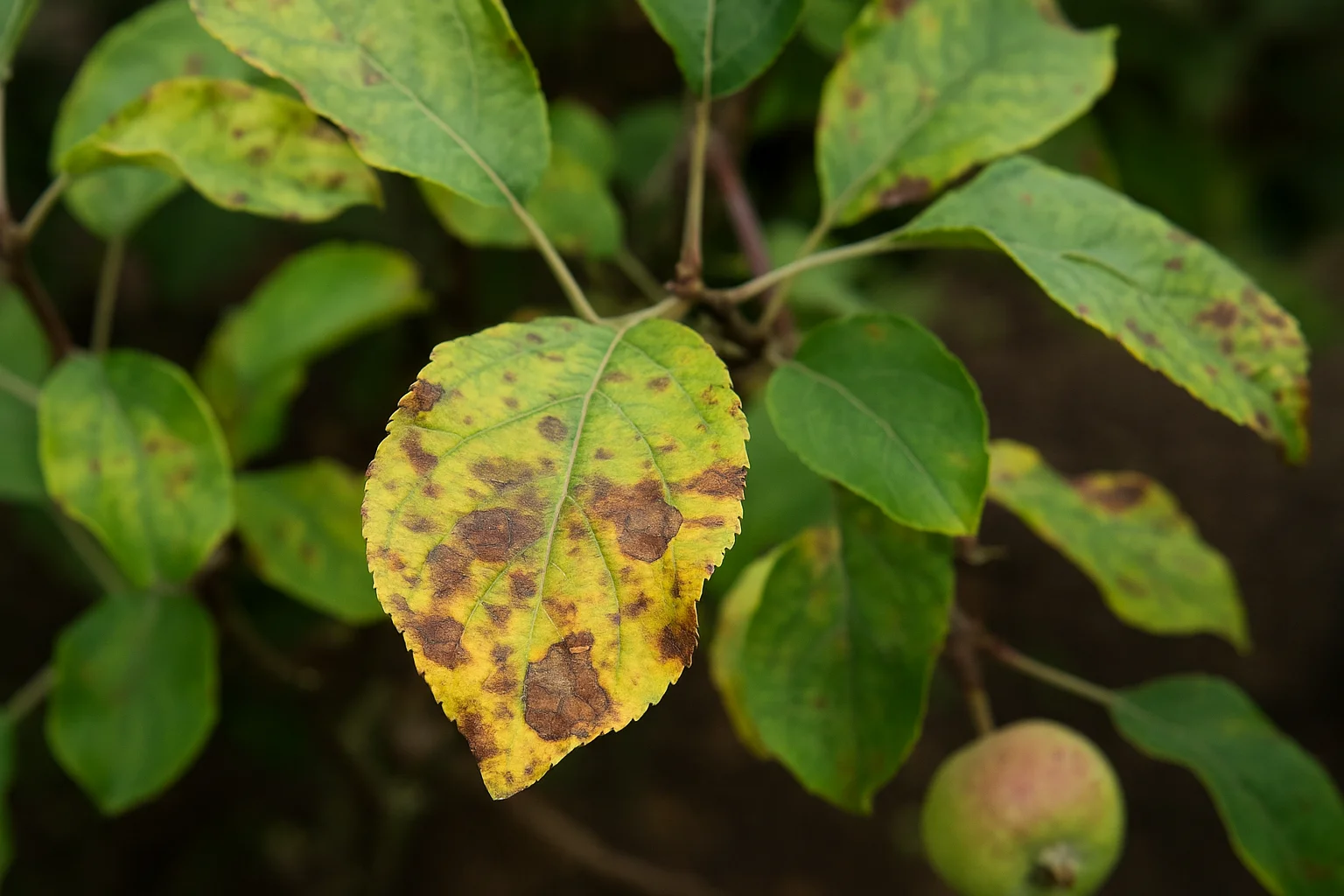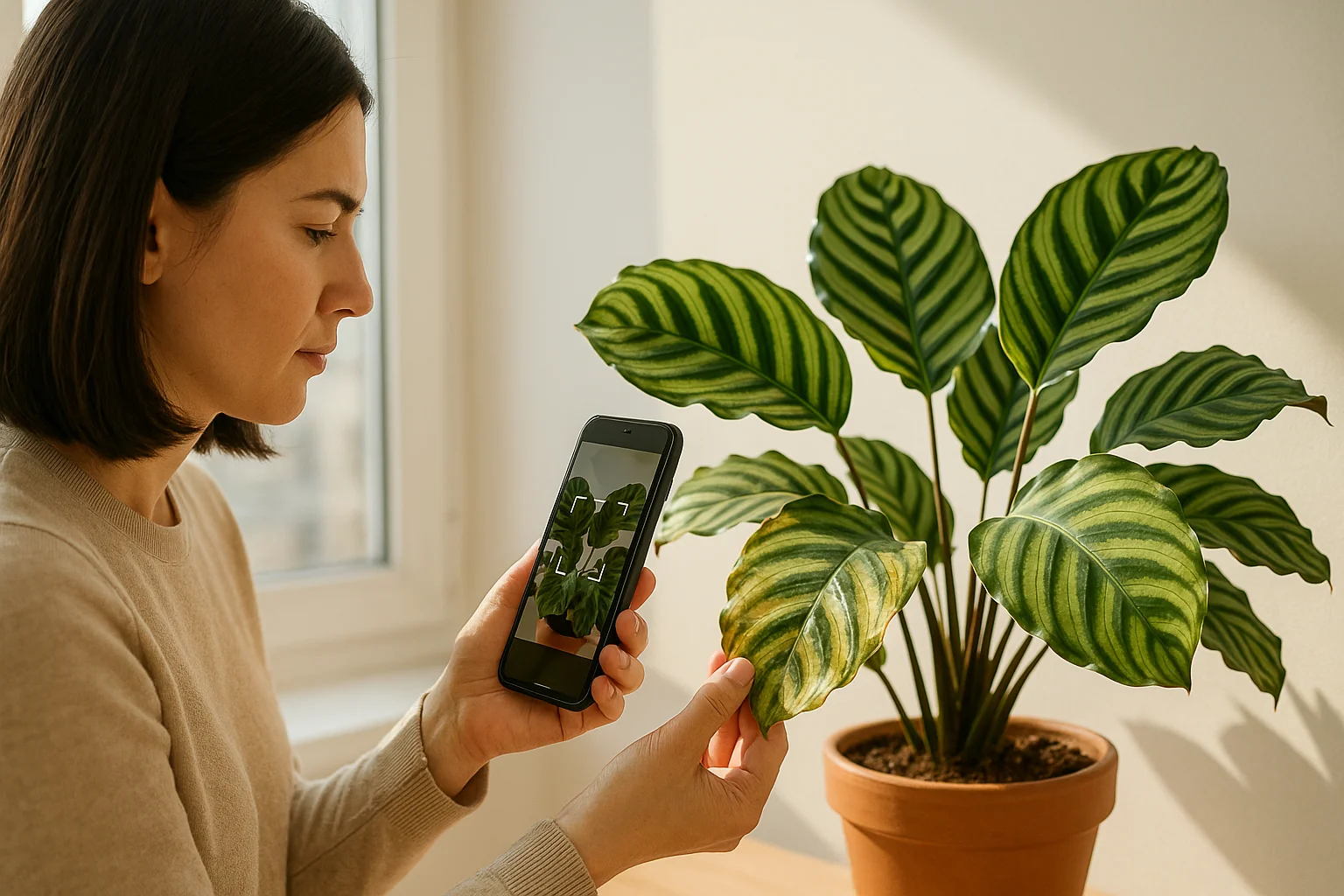How to Identify Plant Diseases: A Professional Guide
The health of plants underpins agriculture, horticulture, and ecosystem stability. When plants display symptoms of stress, accurate diagnosis is essential: misidentification can lead to ineffective treatments, wasted resources, and further decline.
To identify plant disease, you need systematic observation, knowledge of host–pathogen interactions, and an understanding of environmental factors that shape disease expression.
Although laboratories remain central for confirmatory testing, field-based diagnosis—supported today by digital tools such as AI Plant Finder—provides rapid and practical insights.
Glossary of Key Terms
Chlorosis: Yellowing of plant tissue due to loss of chlorophyll.
Necrosis: Localized death of tissue, appearing as brown or black patches.
Sporulation: Production of spores by fungi, visible as powdery or fuzzy growth.
Pycnidia: Small, dark fungal fruiting bodies embedded in tissue.
Sclerotia: Hardened fungal resting structures that survive in soil.
Wilt: Loss of turgor pressure, often due to vascular occlusion by pathogens.
Ooze: Sticky bacterial exudate emerging from infected tissues.
Lesion: Localized diseased area, often discolored or necrotic.
Mosaic pattern: Patchy light and dark green areas on leaves, typical of viral infection.
Abiotic disorder: Plant stress caused by non-living factors (nutrients, chemicals, temperature, water).

How to Identify a Plant Disease
Careful Observation of Symptoms
The first diagnostic step is the recognition of symptoms, which are visible expressions of disease on plant tissue. Symptoms reflect the physiological disruption caused by pathogens or abiotic stressors.
Chlorosis (yellowing): Often associated with nutrient imbalances, viral infections, or impaired root function.
Necrosis (localized tissue death): Manifests as brown, black, or water-soaked areas, typical of fungal leaf spots and bacterial blights.
Wilting: A symptom of vascular occlusion, frequently seen in Fusarium and Verticillium wilts, or of root system dysfunction caused by Phytophthora and Pythium.
Leaf deformation and mosaic patterns: Highly indicative of viral infections, such as cucumber mosaic virus or tobacco mosaic virus.
Abnormal surface growth: Powdery or downy coatings suggest sporulation of obligate fungal pathogens such as Erysiphe (powdery mildew) or Peronospora (downy mildew).
Precise recording of symptom location (leaves, stems, fruits, or roots), intensity, and progression over time strengthens diagnostic accuracy.
Recognition of Symptom Distribution
The pattern of occurrence within the plant and across a population provides valuable clues.
Uniform chlorosis across many plants suggests abiotic disorders such as nutrient deficiency or chemical injury.
Localized necrotic lesions with expansion point to infectious diseases spread by spores, bacteria, or insects.
Angular lesions restricted by leaf veins are characteristic of bacterial pathogens (Xanthomonas, Pseudomonas).
Circular or target-like lesions with concentric zones are typical of fungal pathogens such as Alternaria solani (early blight).
Mottling or patchy discoloration without necrosis strongly suggests viral etiology.
At the field scale, observing whether symptoms appear in random patches or progress outward from an initial infection focus aids in distinguishing infectious spread from uniform abiotic stress.
Influence of Environmental Conditions
Plant pathologists often refer to the disease triangle: a susceptible host, a virulent pathogen, and conducive environmental conditions. Environmental conditions are frequently the deciding factor.
High relative humidity and prolonged leaf wetness foster epidemics of downy mildew, bacterial blights, and leaf spot complexes.
Warm, saturated soils create ideal conditions for damping-off and root rots caused by Pythium, Phytophthora, and Rhizoctonia.
Cool, humid environments encourage gray mold (Botrytis cinerea) and late blight (Phytophthora infestans).
Abiotic stresses such as drought, high salinity, or nutrient toxicity exacerbate susceptibility by weakening plant defenses.
By correlating recent weather patterns or irrigation practices with symptom onset, diagnosticians can narrow potential causal agents.
Recognition of Signs of Pathogens
Where symptoms represent the plant’s response, signs are direct evidence of the pathogen itself. Detecting signs is a critical diagnostic skill.
Mycelium and sporulation: White superficial colonies (powdery mildew), gray fuzzy growth (Botrytis), or downy sporulation on leaf undersides (Peronospora).
Rust pustules: Reddish or orange uredinia erupting on leaf undersides, diagnostic of Puccinia species.
Sclerotia: Hard, dark resting bodies formed by Sclerotinia or Rhizoctonia.
Bacterial ooze: Viscous exudates from vascular tissue or fruits, typical of Erwinia and Xanthomonas.
Fruiting structures: Minute pycnidia or acervuli, often visible with a hand lens, produced by fungi such as Colletotrichum.
Confirming the presence of signs reduces diagnostic uncertainty and prevents confusion with abiotic stress symptoms.
Differentiating Biotic and Abiotic Disorders
Misdiagnosis is common because nutrient deficiencies, chemical injuries, and environmental stresses frequently mimic disease.
Magnesium deficiency produces interveinal chlorosis resembling viral infection.
Herbicide drift can cause leaf distortions similar to viral mosaics.
Sunscald and frost damage create necrotic spots resembling fungal lesions.
Excluding abiotic causes is essential before applying pathogen-specific treatments.
Abiotic vs. Biotic Disorders: Comparison Chart
Symptom | Abiotic Disorder (Non-infectious) | Biotic Disease (Pathogen) | Distinguishing Clues |
Yellowing (Chlorosis) | Magnesium or nitrogen deficiency; waterlogging | Viral mosaics; root rot | Abiotic stress often uniform across plants; viral or fungal diseases show irregular patches |
Leaf Spots | Chemical burn (herbicide, fertilizer salt injury) | Fungal leaf spots (Alternaria, Cercospora) | Abiotic burns often uniform and symmetrical; fungal spots irregular with defined margins |
Wilting | Drought stress; poor drainage | Vascular wilts (Fusarium, Verticillium) | Abiotic wilting recovers after irrigation; wilt diseases persist even when soil is moist |
Distortion | Herbicide drift, cold injury | Viral mosaic or leaf curl | Abiotic distortion usually sudden and widespread; viral symptoms progress gradually |
Necrosis | Frost damage, sunscald | Blight, bacterial canker | Abiotic necrosis often linked to environmental events; biotic necrosis spreads and develops over time |
Use of Diagnostic Tools
Beyond field observation, diagnosticians employ tools to refine identification.
Hand lenses and microscopes for direct observation of spores, conidia, or bacterial streaming.
Field diagnostic kits for selected bacterial and viral pathogens.
Digital platforms and mobile applications for image-based recognition. Tools such as AI Plant Finder analyze photographs of symptomatic tissue, extract morphological and chromatic features, and compare them against a database of over 300,000 species and 98% verified disease patterns. The app not only proposes likely diagnoses but also offers cultural, biological, and chemical management options.
Laboratory methods such as polymerase chain reaction (PCR), enzyme-linked immunosorbent assay (ELISA), and pathogen isolation remain indispensable for definitive identification.

Verification and Reference
Cross-verification with authoritative references is the final step in sound diagnosis. Extension publications, compendia from the American Phytopathological Society, and global databases such as CABI Plantwise provide detailed symptom descriptions and control recommendations. In high-value cropping systems, consultation with professional plant pathologists ensures accuracy and effective integrated disease management strategies.
Case Studies
Case Study 1: Tomato Late Blight in a Field Setting
In a humid summer season, a tomato grower observed rapid yellowing and collapse of foliage, initially assumed to be a nutrient deficiency. Fertilizer applications worsened the problem, and within two weeks, the entire field was blighted. Closer examination revealed irregular, water-soaked lesions with white sporulation on the underside of leaves—classic signs of Phytophthora infestans. A correct early diagnosis would have directed the grower toward fungicidal protection and field sanitation, preventing severe losses.
Case Study 2: Indoor Orchid Powdery Mildew Identified with AI Plant Finder
A man noticed a fine white coating on orchid leaves under indoor growing lights. Initially dismissed as dust, the problem spread quickly. Using AI Plant Finder, the grower photographed the plant, and the system identified powdery mildew with high confidence. The app recommended increasing air circulation, reducing humidity, and applying a sulfur-based fungicide. The problem was arrested early, and the orchids resumed healthy growth.
Conclusion
The identification of plant diseases is a structured process that integrates symptom observation, recognition of pathogen signs, assessment of environmental conditions, and elimination of abiotic disorders.
Modern diagnostic technologies have expanded accessibility by enabling gardeners, farmers, and researchers to conduct rapid assessments in the field. Yet the principles remain rooted in classical plant pathology: careful observation, systematic reasoning, and confirmation through reference and, when necessary, laboratory analysis.
